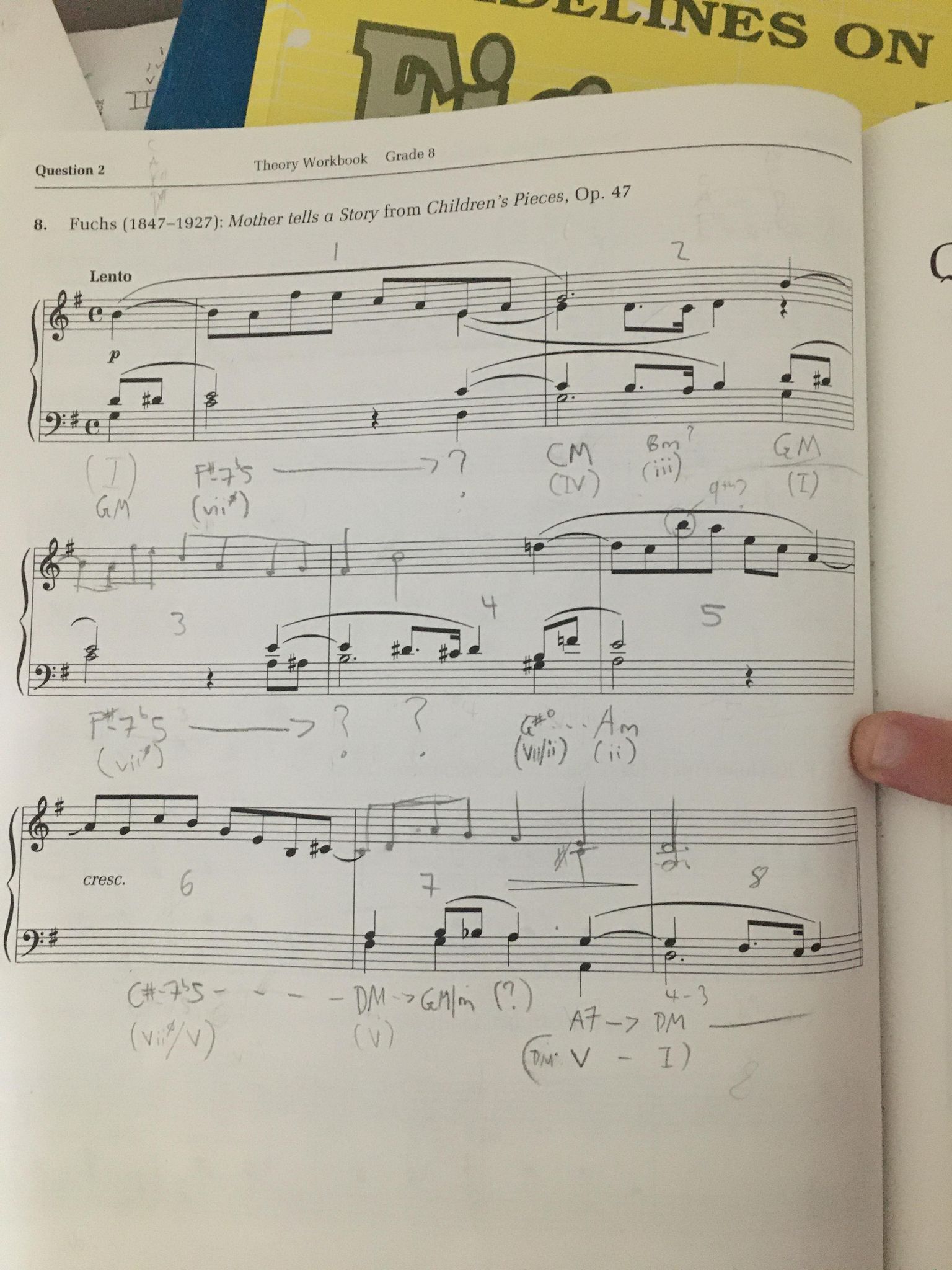On the back of seeing the score, I have filled in the missing harmony. I am still stuck on the harmonic analysis in a few areas. The Roman numerals I have put in thus far are all relative to G major, though we seem to end the piece in D, and I am not too sure about the harmony of the middle section! Here goes:
Bar 1/2
we do not resolve to G major after chord vii. Instead, on the last beat of the bar, we have a chord that includes E, C and D (?), which then resolves to C maj at the beginning of bar 2. Bar 2 moves from C major, through to B minor (?), then ends on the tonic chord.
Bar 3/4-
Almost a carbon copy of the start, this time it seems like chord vii for the whole of bar 3. Very confused as to what is happening for the first 3 beats of bar 4? And we seem to end the bar with Gsharpdim7 leading to A minor (ii).
Bar 5- ii seems to be the harmony, though this would make the circled B in the top part a 9th- so not sure about this at all.
Bar 6/7-
This could be C sharp-7flat 5 moving to D major? We then seem to move to G major/minor before finally cadencing in D major (I'm viewing the F sharp and A above the question mark as passing notes?).
Hope this is easier than the last post!
Any help gratefully received!

